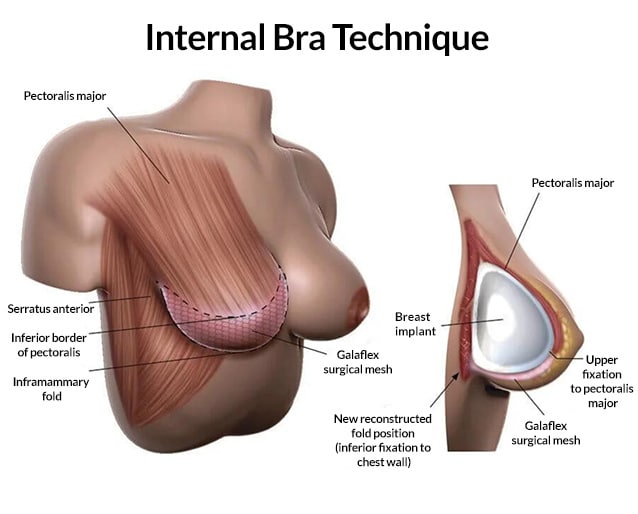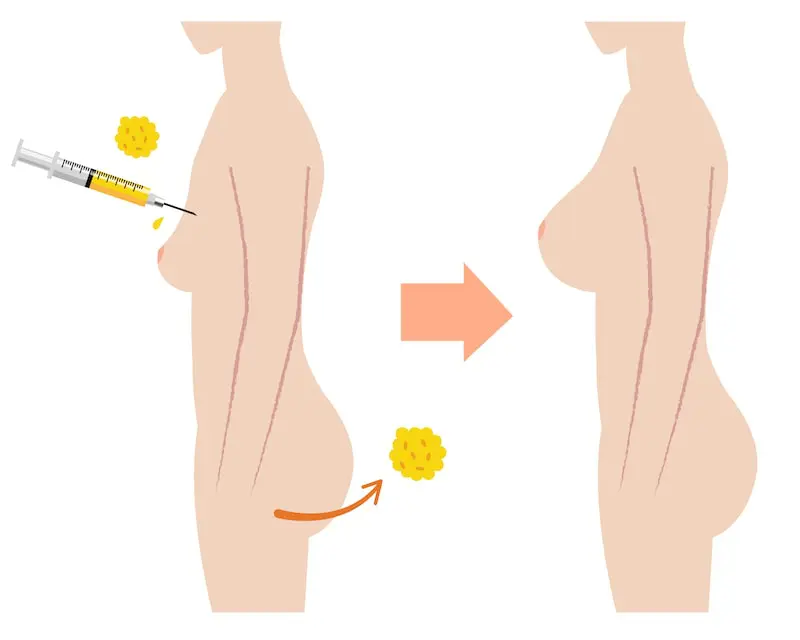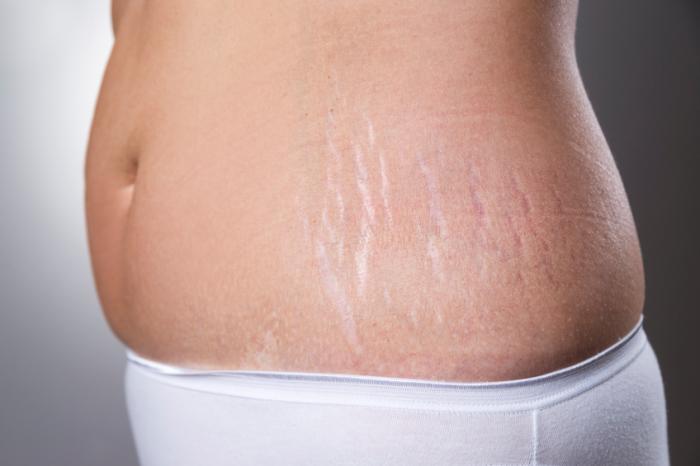The world of beauty is constantly evolving. The latest research in skin tightening reveals groundbreaking techniques that promise to redefine aging. Traditional methods of nonsurgical skin tightening often left users with temporary results and discomfort from skin treatments and tissue tightening performed by cosmetic surgeons. Now, innovative treatments are emerging that provide lasting effects with minimal downtime. These advancements focus on natural collagen production, ensuring your skin looks youthful and vibrant.
Understanding these new options, such as tissue tightening and radiofrequency therapy, can empower you to make informed choices for your skincare routine. Whether you’re seeking non-invasive procedures or exploring the latest technologies, this guide will cover it all. Get ready to discover how you can achieve firmer skin and regain your confidence without the hassle of outdated methods.
Key Takeaways
- Stay informed about the latest research in skin tightening to make educated choices for your skincare routine.
- Explore innovative devices that can help achieve firmer skin without surgery, such as radiofrequency and ultrasound technologies.
- Consider non-surgical methods like chemical peels and microneedling, which can enhance your skin’s elasticity and firmness.
- Moderate techniques, such as laser treatments, can provide noticeable lifting effects; consult with professionals to find the right fit for you.
- Assess if you are an ideal candidate for non-surgical treatments by discussing your skin type and goals with a certified dermatologist.
- For the best results, always seek advice from a qualified dermatologist who can guide you based on the latest insights in skin tightening for 2024.
Overview of Recent Skin Tightening Research
Advancements in Technology
Since 2010, skin tightening technologies have advanced significantly. New methods utilize rf energy to stimulate the skin. This technique helps promote collagen production and remodeling. Devices such as ultrasound and laser treatments have gained popularity. They target deeper layers of skin effectively. These advancements in skin treatments and radio frequency skin tightening lead to better clinical results in many patients.
Research shows that these technologies can improve skin elasticity. A study from 2021 demonstrated noticeable improvements in skin texture. This was measured using objective data, showing enhanced collagen results after treatment. The use of tissue arcing techniques has also emerged. These methods focus on specific areas, allowing for targeted tightening using radio frequency skin.
Importance of Patient Selection
Patient selection plays a crucial role in achieving effective treatment outcomes, particularly in radio frequency skin tightening. Not all individuals respond the same way to tightening therapies. Factors such as skin type, age, and overall health impact results. Clinicians must evaluate these factors before recommending treatments.
A well-chosen patient often experiences better outcomes. For instance, younger patients may see faster recovery and more visible effects from radio frequency skin tightening. Older patients might require multiple sessions for optimal results. Thus, understanding individual needs is essential for success.
Lack of Long-Term Data
Despite the advancements, there is a lack of long-term clinical data on some treatments. Many studies focus on short-term results, such as radio frequency skin tightening, which can be misleading. Patients may not see the full effects of their treatments immediately. The wound healing response can take time, leading to delayed visibility of changes.
e procedures show initial improvement but may not sustain over time. Patients should be informed about this possibility before undergoing treatment. Ongoing research is necessary to provide clearer insights into long-term effectiveness.
Latest Innovations in Skin Tightening Devices
Evolution of Devices
The journey of skin tightening devices began with Thermage® ThermaCool®. This device used radio frequency (RF) technology to stimulate collagen production. Over the years, newer RF and light-based devices have emerged. These innovations focus on improving results while minimizing downtime.
Today, options like noninvasive skin tightening are popular. They offer effective solutions without surgery. The introduction of ultrasound tightening has also changed the landscape. Ultrasound skin treatments penetrate deeper layers of the skin. This approach promotes the growth of new skin cells.
Patient Feedback Integration
Modern devices now incorporate patient feedback mechanisms. This integration allows for personalized treatment plans. Patients can share their experiences and desired outcomes. As a result, practitioners can adjust settings for optimal results.
For example, some devices now include real-time feedback during procedures. This ensures that patients receive the right intensity and duration for their specific needs. Such advancements enhance comfort and effectiveness.
Device Comparisons
Several devices stand out in the market today. Polaris™, Aluma™, and Titan® each offer unique functionalities.
Polaris™ uses light treatments combined with RF energy. This dual-action approach improves skin texture and tightens effectively. Many users report noticeable results after just a few sessions.
Aluma™ focuses on dermal heating using vacuum apparatus. It lifts and tightens skin through controlled heating. The vacuum helps increase blood circulation, enhancing overall skin health.
Titan® employs infrared light technology to heat the dermis layer. It stimulates collagen production while cooling the surface layer. Patients appreciate its noninvasive nature and minimal discomfort.
Each device has its strengths, catering to different needs and preferences.
Home Devices
Home radiofrequency therapy devices are gaining traction as well. These allow individuals to perform treatments at convenience. Users can experience benefits similar to professional treatments over time.
However, results may vary compared to in-office procedures. Professional devices often deliver higher energy levels and more precise control.
Non-Surgical Methods for Firmer Skin
RF Energy
RF energy plays a key role in non-invasive skin tightening. This technology heats the deep dermis layers of the skin. It stimulates collagen production, which helps improve skin elasticity. As collagen levels rise, skin appears firmer and more youthful.
Studies show that RF treatments can effectively reduce wrinkles and sagging skin. A 2020 study found significant improvements in skin texture after multiple RF sessions. Patients reported noticeable results after just a few treatments. This makes RF energy a popular choice for those seeking skin rejuvenation without surgery.
Light-Based Treatments
Light-based treatments also contribute to non-surgical skin tightening. These methods use various wavelengths of light to target specific skin concerns. They stimulate cellular activity in the skin cells, promoting healing and rejuvenation.
For instance, laser therapies can penetrate the skin, targeting fatty tissue and improving overall tone. Research indicates these treatments can enhance collagen production as well. Many patients prefer light-based options due to their effectiveness and minimal downtime.
Comfort Mechanisms
Devices with cooling mechanisms provide added comfort during treatments. These systems cool the skin’s surface while delivering energy below it. This dual-action approach minimizes discomfort and protects the outer layers of skin.
A 2021 survey revealed that patients felt more at ease with cooling devices during procedures. The cooling effect reduces pain perception, allowing for a more pleasant experience. Comfort is crucial when considering cosmetic procedures, especially for sensitive areas.
Multi-Pass Treatments
The trend towards multi-pass, lower-energy treatments is growing in popularity. These methods involve applying lower energy levels across multiple passes rather than high energy in one session. This technique enhances safety while still delivering effective results.
Research from 2022 supports this approach, showing fewer side effects compared to traditional methods. Patients experienced less redness and swelling post-treatment. This makes multi-pass techniques an attractive option for those concerned about recovery time.
Moderate Techniques for Skin Lifting
RF Technologies
Bipolar and unipolar radiofrequency (RF) technologies play a significant role in skin lifting. These methods create heat within the skin layers. The heat causes collagen denaturation, which helps to tighten the skin. Bipolar RF targets smaller areas, while unipolar RF can cover larger regions. Both techniques stimulate collagen production over time.
Research shows that patients often experience noticeable improvements after a few sessions. The results can last up to 18 months. This makes RF technologies a popular choice for those seeking moderate lifting effects without surgery.
Vacuum Technology
Combining RF with vacuum technology enhances treatment comfort. The vacuum mechanism pulls the skin closer to the RF device. This reduces pain during the procedure. Patients report a more pleasant experience compared to traditional RF treatments alone.
Studies indicate that this combination can improve treatment efficacy as well. By minimizing discomfort, patients are more likely to complete their recommended sessions. This leads to better overall results and satisfaction with the skin lifting process.
Fractionated Energy Delivery
Fractionated energy delivery systems are another innovative approach for collagen remodeling. This method delivers energy in small, controlled fractions rather than all at once. As a result, it minimizes damage to surrounding tissues.
The fractionated approach allows for quicker recovery times. Patients may notice improvements in skin texture and firmness within weeks of treatment. Studies suggest that these systems effectively stimulate collagen production over time.
Clinics increasingly adopt these techniques due to their effectiveness and patient satisfaction rates. Many individuals prefer non-surgical options that still provide significant results.
Summary of Techniques
- Bipolar RF: Targets smaller areas; stimulates collagen.
- Unipolar RF: Covers larger regions; effective for broader lifting.
- Vacuum Technology: Reduces pain; enhances comfort during treatment.
- Fractionated Delivery: Minimizes tissue damage; faster recovery.
These moderate techniques offer safe alternatives for those looking to improve their skin’s appearance without invasive procedures.
Ideal Candidates for Non-Surgical Treatments
Patient Selection
Many clinicians agree that certain characteristics define ideal candidates for non-surgical skin tightening. Younger patients often see better results due to their skin’s natural elasticity. Patients aged 30 to 60 usually benefit most from these treatments. Those with mild to moderate skin laxity respond well.
Candidates should also be in good health. Chronic conditions or recent surgeries can affect healing. A thorough consultation with cosmetic surgeons helps determine suitability. They will assess the skin condition and discuss medical history.

Contraindications
Several factors can limit treatment success. Patients with active skin infections or inflammatory conditions should avoid procedures. Individuals with certain autoimmune disorders may not heal properly after treatment. Moreover, those who are pregnant or breastfeeding should refrain from undergoing radiofrequency treatments.
Use of specific medications can also impact outcomes. For instance, blood thinners may increase bleeding risks during the procedure. Clinicians need to evaluate all medications before proceeding.
Realistic Expectations
Setting realistic expectations is vital for potential candidates. Non-surgical treatments offer improvements but not perfection. Patients should understand that results vary based on skin type and condition. Some may need multiple sessions to achieve desired effects.
The healing process can also differ among individuals. Some might experience swelling or redness after radiofrequency therapy. These side effects typically resolve within a few days.
Patients must recognize that results are not immediate. Remodeling of collagen takes time, and full benefits may appear weeks after treatment.
Treatment Tips
To enhance treatment effectiveness, patients should follow specific tips. Staying hydrated aids the healing process. A healthy diet rich in vitamins supports skin health as well.
Clinicians recommend avoiding sun exposure before and after treatments. Sunscreen use is crucial to protect the skin and maintain results.
Regular follow-ups with cosmetic surgeons help track progress and adjust plans if necessary.
Device Treatment Paradigms
Different devices exist for non-surgical skin tightening, each with unique advantages. Radiofrequency treatment is popular for its effectiveness without invasive procedures. This method stimulates collagen production, leading to tighter skin over time.
Clinical trials have shown promising results with various devices used in radiofrequency therapy. Many clinicians advocate for personalized treatment plans based on patient needs.
Consult a Certified Dermatologist for Advice
Importance of Consultation
Seeking advice from a certified dermatologist is crucial for anyone considering skin tightening treatments. These professionals possess the knowledge to assess individual skin types and conditions. They can recommend the most suitable procedures based on specific needs. Personalized treatment plans are essential. What works for one person may not work for another.
Certified dermatologists evaluate factors like age, skin type, and desired outcomes. They consider how dermal tissues respond to various treatments. This assessment helps ensure safety and effectiveness in procedures.
Role of Dermatologists
Dermatologists play a vital role in the skin tightening process. They understand how different treatments affect collagen synthesis in the skin. Collagen is important for maintaining skin elasticity and firmness. A dermatologist can explain which methods promote collagen production effectively.
In the United States, many options exist for non-surgical skin tightening. These include laser treatments, ultrasound therapy, and radiofrequency devices. Each method has unique benefits and limitations. A dermatologist can guide patients through these choices, ensuring they select the right procedure for their situation.
Safety First
Choosing a certified practitioner ensures safe procedures. Unqualified individuals may offer cheaper alternatives but lack proper training. This can lead to complications or unsatisfactory results. Certified dermatologists follow strict guidelines and protocols to minimize risks.
Patients should ask about a dermatologist’s qualifications before proceeding with any treatment. Verifying credentials can provide peace of mind. It also ensures that the practitioner has experience with specific techniques relevant to skin tightening.
Understanding Procedures
Different procedures vary in technique and recovery time. For instance, some methods require minimal downtime while others may need longer recovery periods. Discussing these details with a dermatologist helps set realistic expectations.
The choice of procedure often depends on personal goals and skin condition. Some may seek subtle changes, while others desire more dramatic results. Understanding the range of available options allows patients to make informed decisions.
Final Thoughts
Consulting a certified dermatologist is an essential step in achieving effective skin tightening results. Their expertise helps determine the best approach for individual needs. Patients benefit from tailored plans that consider their unique circumstances.
2024 Insights on Non-Surgical Skin Tightening
Emerging Trends
New technologies will shape nonsurgical skin tightening in 2024. Devices that utilize heat energy will become more popular. These devices stimulate collagen production, which helps with tissue tightening. The focus will shift towards successful collagen remodeling for lasting results.
Research indicates a rise in the use of absorbable sutures in non-invasive techniques. These sutures can enhance the effects of skin tightening by providing support and structure. They may also promote healing, leading to better outcomes.
Device Efficacy
Improvements in device efficacy are expected this year. Manufacturers are working on enhancing the effectiveness of current treatments. Newer models will likely provide quicker results with less discomfort. This focus on patient comfort will lead to a more pleasant experience during procedures.
Clinical trials are showing promising data regarding initial collagen contraction after treatments. Enhanced devices may reduce recovery time and side effects. Patients will benefit from shorter treatment sessions without sacrificing results.
Long-Term Outcomes
Long-term clinical data is crucial for evaluating treatment outcomes. As research progresses, clearer insights into the longevity of results will emerge. Studies from recent years show that nonsurgical methods can maintain improvements for several years.
The United States market for skin tightening continues to grow. In 2023, it was valued at over $2 billion, with projections for significant growth through 2025. This trend reflects an increasing demand for effective solutions against wrinkles and fine lines.
Emerging studies will likely explore combinations of techniques to enhance results further. For example, combining energy-based treatments with injectables may yield superior outcomes. These breakthroughs could revolutionize how patients approach skin tightening.
Patient Experience
Patients will increasingly seek personalized treatment plans in 2024. Customization based on individual skin types and conditions will become standard practice. Dermatologists will assess each patient’s needs to recommend the best options.
Technological advancements will also improve overall user experience. Devices equipped with smart technology can monitor treatment progress in real-time. This capability allows dermatologists to adjust settings during sessions, optimizing results.
Final Remarks
The latest research in skin tightening shows promising advancements. You’ve learned about innovative devices and non-surgical methods that can help achieve firmer skin. Understanding the ideal candidates for these treatments empowers you to make informed choices. Consulting a certified dermatologist ensures you receive tailored advice based on your unique needs.
As you explore options for skin tightening, remember that the right information is key. Stay updated on trends and techniques that can enhance your skin’s appearance. Take charge of your skincare journey today. Don’t hesitate to reach out to professionals who can guide you in selecting the best treatment for your goals. Your path to youthful, vibrant skin starts with the right knowledge and support.
Frequently Asked Questions
What are the latest advancements in skin tightening research?
Recent studies focus on innovative technologies like ultrasound and radiofrequency treatments. These methods enhance collagen production, leading to firmer skin with minimal downtime.
Are non-surgical skin tightening methods effective?
Yes, non-surgical methods can effectively improve skin firmness. Techniques such as laser therapy and microneedling stimulate collagen, offering noticeable results without surgery.
Who are ideal candidates for non-surgical skin tightening?
Ideal candidates typically include individuals with mild to moderate skin laxity. Those seeking subtle improvements without invasive procedures also benefit significantly.
What should I expect during a non-surgical skin tightening procedure?
Patients can expect minimal discomfort during the procedure. Results may vary but often include tighter skin and improved texture within weeks of treatment.
How long do results from non-surgical skin tightening last?
Results usually last between six months to two years, depending on the method used and individual skin type. Regular maintenance treatments can prolong effects.
Is it necessary to consult a dermatologist before treatment?
Absolutely. Consulting a certified dermatologist ensures personalized advice and safety. They can recommend the best treatment options based on your unique skin needs.
What are the top devices used for skin tightening in 2024?
In 2024, popular devices include Ultherapy, Thermage, and Sygmalift. These advanced technologies deliver effective results, promoting collagen regeneration for firmer skin.









